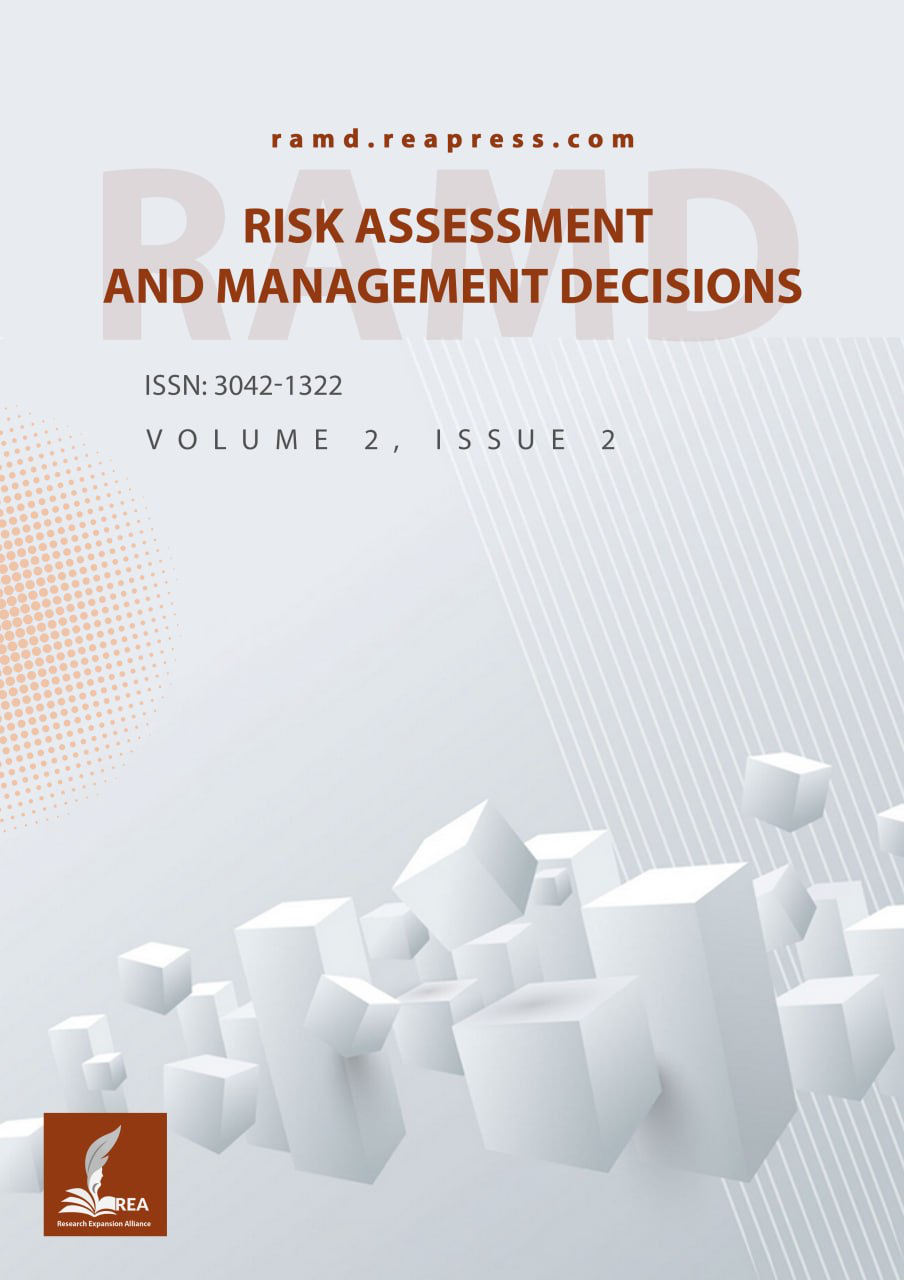Quantitative Analysis in Prioritizing Elements for Efficient Logistics Strategies: A Case Study in Eskişehir
Abstract
Logistics strategies are essential elements in the concepts of designing and operating logistics processes and systems, identifying visions, selecting feasible goals, constructing plans, decisions, and policies that help businesses in achieving their goals. Also, the issues of implementing logistics services in a shorter time, customer suitability, low cost, and customer support from pre- to after-sales have an impact on the customers’ service perceptions. By this means, better customer satisfaction can be achieved. However, the importance of factors in logistics strategy according to the customer's perspective needs to be determined. Value-added elements of acquiring internal and external customer satisfaction, decreasing costs, strengthening visibility, and presenting the right product to the right customers in a suitable place, as promotion activity shows the importance of logistics strategies for businesses. In this study, elements effective in forming logistic strategies for manufacturing firms having more than 50 employees in Eskişehir are aimed to prioritize. DEMATEL, as a Multi-Criteria Decision-Making (MCDM) technique, examines the logical relationship of factors, and researching the direct influence matrix in a complex system is handled as a prioritization method. Pythagorean Fuzzy Sets (PFS) are preferred to better explain the judgments of decision-makers in uncertainty by giving more flexibility than fuzzy and Intuitionistic Fuzzy Sets (IFS).
Keywords:
Logistics, Forming logistics strategy, Pythagorean fuzzy sets, DEMATELReferences
- [1] Tokay, S. H., Deran, A., & Arslan, S. (2015). Lojistik Maliyet Yönetiminde İzlenebilecek Stratejiler Ve Muhasebe Eğitiminden Beklentiler. Dumlupınar üniversitesi sosyal bilimler dergisi, (29), 1–15. https://dergipark.org.tr/en/pub/dpusbe/issue/4771/65666
- [2] Memiş, S. (2019). Weighting green management practices in accommodation establishments using the entropy method: The case of Giresun province. Journal of business research, 11(1), 653–665. (In Turkiye). https://www.ceeol.com/search/article-detail?id=791290
- [3] Hurst, D. K. (2000). Crisis and renewal. Alfa Printing Publishing, Istanbul. (In Turkiye). https://b2n.ir/ph2283
- [4] Fraering, M., & Prasad, S. (1999). International sourcing and logistics: An integrated model. Logistics information management, 12(6), 451–460. https://doi.org/10.1108/09576059910299018
- [5] Rubio, S., Díaz, E., Martín, J., & Puente, J. M. (2004). Evaluation of subjective mental workload: A comparison of SWAT, NASA‐TLX, and workload profile methods. Applied psychology, 53(1), 61–86. https://psycnet.apa.org/doi/10.1111/j.1464-0597.2004.00161.x
- [6] Brewer, A. M., & Hensher, D. A. (2001). Identifying the overarching logistics strategy of business processes: an exploratory analysis. International journal of logistics, 4(1), 1–41. http://dx.doi.org/10.1080/13675560110037717
- [7] Korucuk, S., & Memiş, S. (2019). Prioritization of green port applications performance criteria with the DEMATEL method: The istanbul example. Avrasya uluslararası araştırmalar dergisi, 7(16), 134–148. (In Turkiye). https://dergipark.org.tr/en/download/article-file/677887
- [8] Ülgen, H. (2013). Strategic management in business. Beta. (In Turkiye). https://www.scirp.org/reference/referencespapers?referenceid=2936597
- [9] Waters, D. (2003). Logistics: An introduction to supply chain management. Palgrave macmillan. https://www.scirp.org/reference/referencespapers?referenceid=2991614
- [10] McGinnis, M. A., & Kohn, J. W. (2002). Logistics strategy—revisited. Journal of business logistics, 23(2), 1–17. https://doi.org/10.1002/j.2158-1592.2002.tb00023.x
- [11] Ratliff, H. D., & Nulty, W. G. (2008). Logistics composite modeling the logistics instıtute at georgia tech. https://B2n.ir/xs9365
- [12] GUPTA, D. (1993). On measurement and valuation of manufacturing flexibility. The international journal of production research, 31(12), 2947–2958. https://doi.org/10.1080/00207549308956909
- [13] Lambert, D. M., & Stock, J. R. (1993). Strategic logistics management (Vol. 69). Irwin Homewood, IL. https://cir.nii.ac.jp/crid/1970023484913118166
- [14] Ballou, R. H., & Srivastava, S. K. (2007). Business logistics/supply chain management: planning, organizing, and controlling the supply chain. Pearson Education India. https://www.scirp.org/reference/referencespapers?referenceid=1576533
- [15] Mahapatra, S. (2003). Modeling the supply chain; Jeremy F. Shapiro. Journal of business logistics, 24, 1–31. http://dx.doi.org/10.1002/j.2158-1592.2003.tb00040.x
- [16] Turan, E. (2025). Strategic logistics applications and contributions to competition in the ready-made clothing industry. (In Turkiye). http://dx.doi.org/10.13140/RG.2.2.10918.84807
- [17] Calantone, R., & Di Benedetto, A. (2007). Clustering product launches by price and launch strategy. Journal of business & industrial marketing, 22, 4–19. http://dx.doi.org/10.1108/08858620710722789
- [18] McGinnis, M. A., & Kohn, J. W. (1993). Logistics strategy, organizational environment, and time competitiveness. Journal of business logistics, 14(2), 1. https://B2n.ir/ju8434
- [19] Cooper, M. C., & Ellram, L. M. (1993). Characteristics of supply chain management and the implications for purchasing and logistics strategy. The international journal of logistics management, 4(2), 13–24. https://doi.org/10.1108/09574099310804957
- [20] Closs, D. J., & Clinton, S. R. (1997). Logistic strategy: Does it exist? Journal of business logistics, 18(1), 1–19. https://b2n.ir/wp9397
- [21] Stock, G. N., Greis, N. P., & Kasarda, J. D. (1998). Logistics, strategy and structure: A conceptual framework. International journal of operations & production management, 18(1), 37–52. https://doi.org/10.1108/01443579810192772
- [22] Savitskie, K. (2007). Internal and external logistics information technologies: The performance impact in an international setting. International journal of physical distribution & logistics management, 37(6), 454–468. https://doi.org/10.1108/09600030710763378
- [23] Bilginer, N., & Kayabasi, A. (2007). Evaluation of logistics activities of enterprises from a competitive perspective: An application on manufacturing enterprises. Ege academic review, 7(2), 629–644. (In Turkiye). https://ideas.repec.org/a/ege/journl/v7y2007i2p629-644.html
- [24] Spillan, J. E., Kohn, J. W., & McGinnis, M. A. (2010). A study of logistics strategies in small versus large US manufacturing firms. Journal of transportation management, 21(1), 1–21. http://dx.doi.org/10.22237/jotm/1270080240
- [25] Erten, S. (2010). Logistics process management analysis of a public institution. Dokuz Eylul University. (In Turkiye). https://B2n.ir/zz3948
- [26] McGinnis, M. A., Harcar, T., Kara, A., & Spillan, J. E. (2011). Cross-cultural validation of the factorial structure of a logistics strategy model: A three-country study. Journal of transportation management, 22(2), 25–43. http://dx.doi.org/10.22237/jotm/1317427380
- [27] Beškovnik, B., & Twrdy, E. (2012). Green logistics strategy for south east europe: To improve intermodality and establish green transport corridors. Transport, 27(1), 25–33. https://doi.org/10.3846/16484142.2012.663731
- [28] Yıldız, M. S., Bilgin, Y., & Yazgan, H. (2013). Examining the factors that lead businesses to invest in logistics activities: The example of Çınar Boru Profil Sanayi ve Ticaret AŞ. Business and economics research journal, 4(4), 131–145. (In Turkiye). https://b2n.ir/gb1844
- [29] Dinter, B. (2013). Success factors for information logistics strategy—An empirical investigation. Decision support systems, 54(3), 1207–1218. https://doi.org/10.1016/j.dss.2012.09.001
- [30] Kolińska, K., & Cudziło, M. (2014). Comparison of logistics indicators as a way of improving efficiency of supply chains. Research in logistics & production, 4(1), 21–31. https://b2n.ir/qr7297
- [31] Şekkeli, Z. H. (2015). A field research on the effects of logistics strategies on logistics capabilities abstract. The journal of social sciences, 2(5), 398–398. (In Turkiye). http://dx.doi.org/10.16990/SOBIDER.119
- [32] Akiş, E. (2016). The logistics sector in Turkey and its impact on competitiveness. Istanbul Kültür university/faculty of economics and administrative sciences/department of economics. (In Turkiye). http://hdl.handle.net/11413/1236
- [33] Erdal, H., & Korucuk, S. (2018). Determining innovation priorities in the logistics sector: A comparative analysis. Kocaeli university journal of social sciences, (36), 1–24. (In Turkiye). https://dergipark.org.tr/en/pub/kosbed/issue/43239/525061
- [34] Sağlam, M. (2019). The distribution of Turkey's exports by transportation modes and the potential effects of an integrated logistics strategy on Turkey's export performance: A study on exporting firms in Konya [Thesis]. (In Turkiye).
- [35] Mendes, A., Cruz, J., Saraiva, T., Lima, T. M., & Gaspar, P. D. (2020). Logistics strategy (fifo, fefo or lsfo) decision support system for perishable food products [presentation]. 2020 international conference on decision aid sciences and application (DASA) (pp. 173–178). https://doi.org/10.1109/DASA51403.2020.9317068
- [36] Qin, X., Liu, Z., & Tian, L. (2021). The optimal combination between selling mode and logistics service strategy in an e-commerce market. European journal of operational research, 289(2), 639–651. https://doi.org/10.1016/j.ejor.2020.07.029
- [37] Korucuk, S., Memiş, S., & Karamaşa, Ç. (2022). The rating of confusion in supply chain dynamics in food business and selecting the most ideal capacity strategy during COVID-19. In Cases on supply chain management and lessons learned from Covid-19 (pp. 39–61). IGI Global Scientific Publishing. http://dx.doi.org/10.4018/978-1-7998-9140-6.ch003
- [38] Korucuk, S., Aytekin, A., Ecer, F., Pamucar, D., & Karamaşa, Ç. (2022). Assessment of ideal smart network strategies for logistics companies using an integrated picture fuzzy LBWA-CoCoSo framework. Management decision, 1(29), 1434–1462. http://dx.doi.org/10.1108/MD-12-2021-1621
- [39] Aytekin, A., Korucuk, S., Bedirhanoğlu, Ş. B., & Simic, V. (2024). Selecting the ideal sustainable green strategy for logistics companies using a T-spherical fuzzy-based methodology. Engineering applications of artificial intelligence, 127, 107347. https://doi.org/10.1016/j.engappai.2023.107347
- [40] Yager, R. R. (2013). Pythagorean fuzzy subsets. Proceedings of the 2013 Joint IFSA World Congress and NAFIPS Annual Meeting, IFSA/NAFIPS 2013. IEEE. https://doi.org/10.1109/IFSA-NAFIPS.2013.6608375
- [41] Zhang, X. (2016). A novel approach based on similarity measure for Pythagorean fuzzy multiple criteria group decision making. International journal of intelligent systems, 31(6), 593–611. https://doi.org/10.1002/int.21796
- [42] Zhou, L., Dai, G., Qin, R., Tang, M., & Qiu, J. (2018). Risk analysis of gob coal spontaneous combustion in methane-rich, combustion-prone coal seam based on intuitionistic fuzzy DEMATEL. Journal of failure analysis and prevention, 18(4), 975–987. https://doi.org/10.1007/s11668-018-0492-7
- [43] Yazdi, M., Nedjati, A., Zarei, E., & Abbassi, R. (2020). A novel extension of DEMATEL approach for probabilistic safety analysis in process systems. Safety science, 121, 119–136. https://doi.org/10.1016/j.ssci.2019.09.006
- [44] Fontela, E. (1974). Structural analysis of the world problematique:(Methods). Battelle Geneva Research Centre. https://B2n.ir/nw3797
- [45] Bai, C., & Sarkis, J. (2013). A grey-based DEMATEL model for evaluating business process management critical success factors. International journal of production economics, 146(1), 281–292. https://doi.org/10.1016/j.ijpe.2013.07.011
- [46] Tseng, M.-L., & Lin, Y. H. (2009). Application of fuzzy DEMATEL to develop a cause and effect model of municipal solid waste management in Metro Manila. Environmental monitoring and assessment, 158(1), 519–533. https://doi.org/10.1007/s10661-008-0601-2
- [47] Wu, W. W., & Lee, Y. T. (2007). Developing global managers’ competencies using the fuzzy DEMATEL method. Expert systems with applications, 32(2), 499–507. https://doi.org/10.1016/j.eswa.2005.12.005
- [48] Tsai, W. H., & Chou, W. C. (2009). Selecting management systems for sustainable development in SMEs: A novel hybrid model based on DEMATEL, ANP, and ZOGP. Expert systems with applications, 36(2, Part 1), 1444–1458. https://doi.org/10.1016/j.eswa.2007.11.058
- [49] Cui, F. B., You, X. Y., Shi, H., & Liu, H. C. (2018). Optimal siting of electric vehicle charging stations using pythagorean fuzzy VIKOR APPROACH. Mathematical problems in engineering, 2018(1), 9262067. https://doi.org/10.1155/2018/9262067
- [50] Baykasoğlu, A., Kaplanoğlu, V., Durmuşoğlu, Z. D. U., & Şahin, C. (2013). Integrating fuzzy DEMATEL and fuzzy hierarchical TOPSIS methods for truck selection. Expert systems with applications, 40(3), 899–907. https://doi.org/10.1016/j.eswa.2012.05.046
- [51] Dalalah, D., Hayajneh, M., & Batieha, F. (2011). A fuzzy multi-criteria decision making model for supplier selection. Expert systems with applications, 38(7), 8384–8391. https://doi.org/10.1016/j.eswa.2011.01.031


